When it comes describing CollectA’s choice of species to produce, it starts to sound like a broken record. But true to their mission statement, they continue to mine the long list of unique and often obscure animals that no one had paid attention to and bring them up to the spotlight.
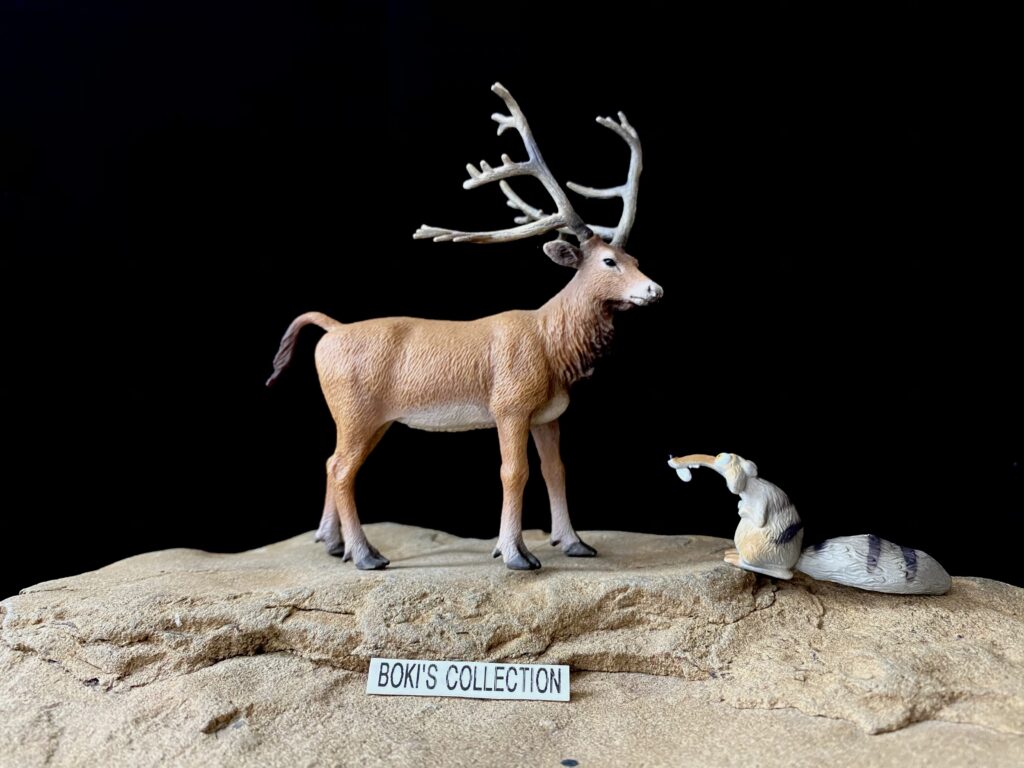
So, it wasn’t at all surprising that they would be the one to produce one of the most interesting extant deer, the Père David’s deer (Elaphurus davidianus), our review subject today. Père David’s deer is a species of large deer that is native to the lush river valleys of China. Besides its unique appearance, it also has a very interesting history that is worth mentioning as it serves a valuable lesson.
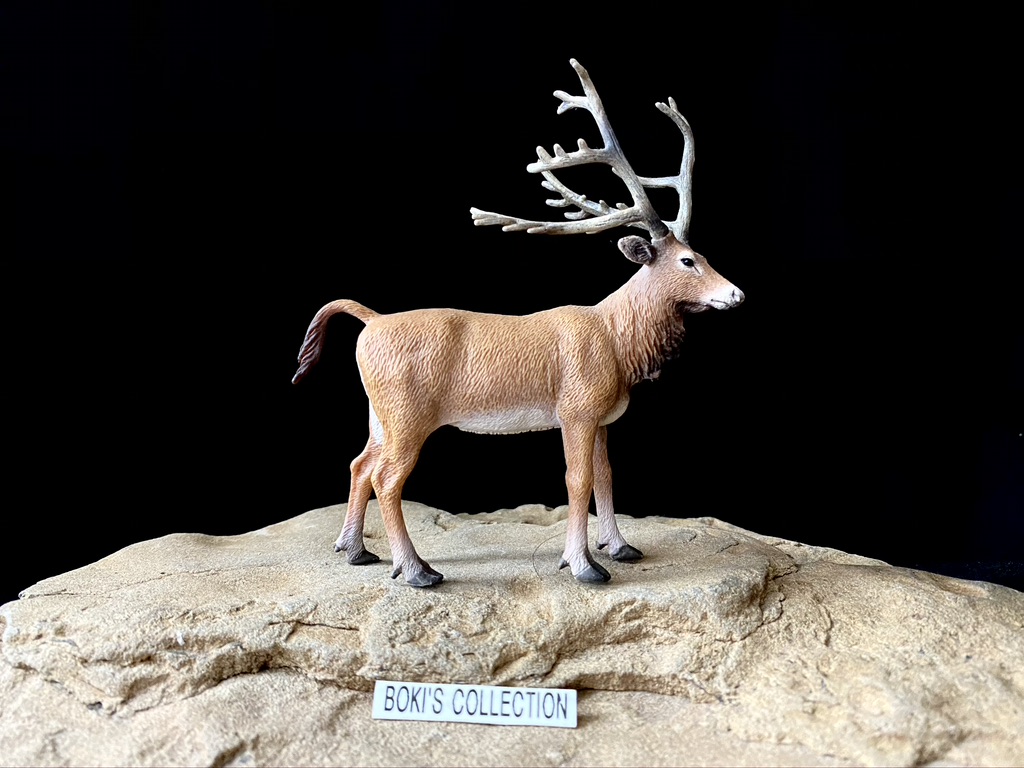
Père David’s deer are large animals reaching an adult height of 6-7 long and almost 4 feet tall at the shoulders. It truly is an odd animal that seems put together using various different animal parts combining them into one. It has a long tail that unlike other deer, looks more like that of a horse or donkey. Its unique and unconventional body features has led to its informal name often called ” the four unlike or like none of the four”, the four animals being cow, deer, donkey, and camel.

This deer has some unique and distinctive features that set it apart from all other deer. It lives a semiaquatic lifestyle, spending hours standing in water up to its shoulders while feeding on aquatic vegetation. This lifestyle led it to evolve unique hooves that are big and wide (hence the cow reference) to help the animal to not sink in soft mud. CollectA did a good job in capturing sculpting this distinct hoof all the way down to the tuft of hair around the ankles.

Perhaps the most obvious and impressive unique feature of this animal is its antlers. Like all deer, males have antlers that they grow just before the mating season and shed after. What makes their antlers unique is that they branched almost upwards, with the long points backward and sideways almost in a flattened sprawling orientation. No other deer exhibits this type of antlers, making them unmistakable.
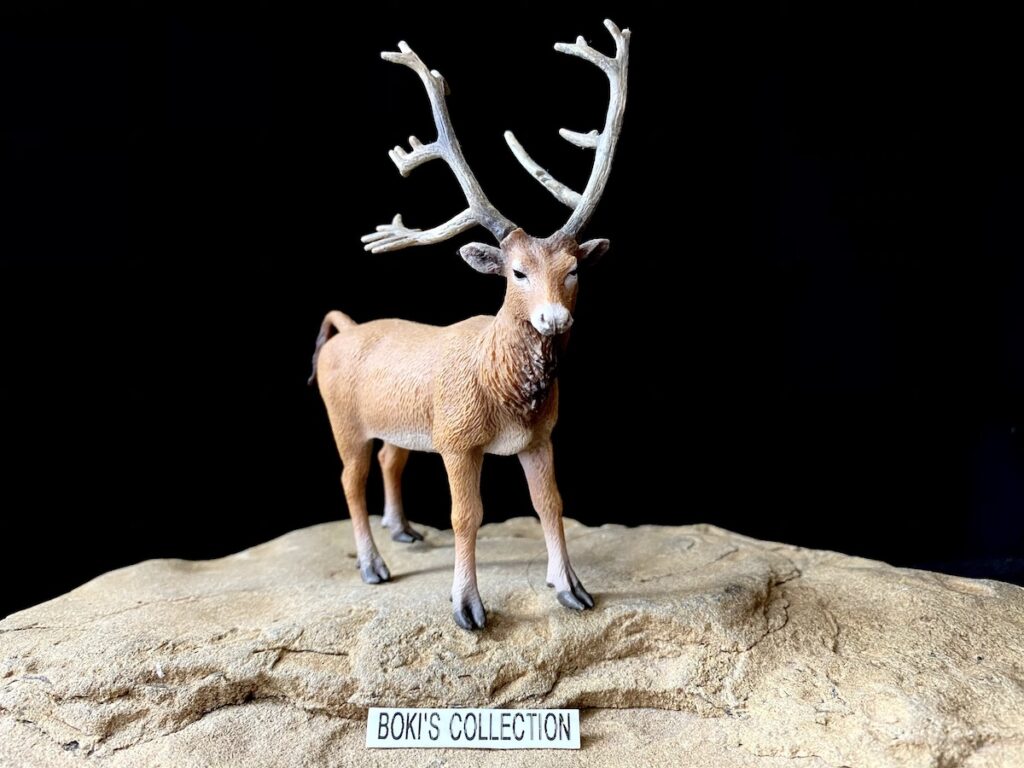
This figure captured this feature, and it has big impressive antlers. The antlers are nicely detailed and full of texture. It is colored a grayish-brown with white dry-brushed creating a realistic look. Amazingly enough, the antlers on my figure were very well protected and does not show any sign of warping, something commonly seen in antelope figures.
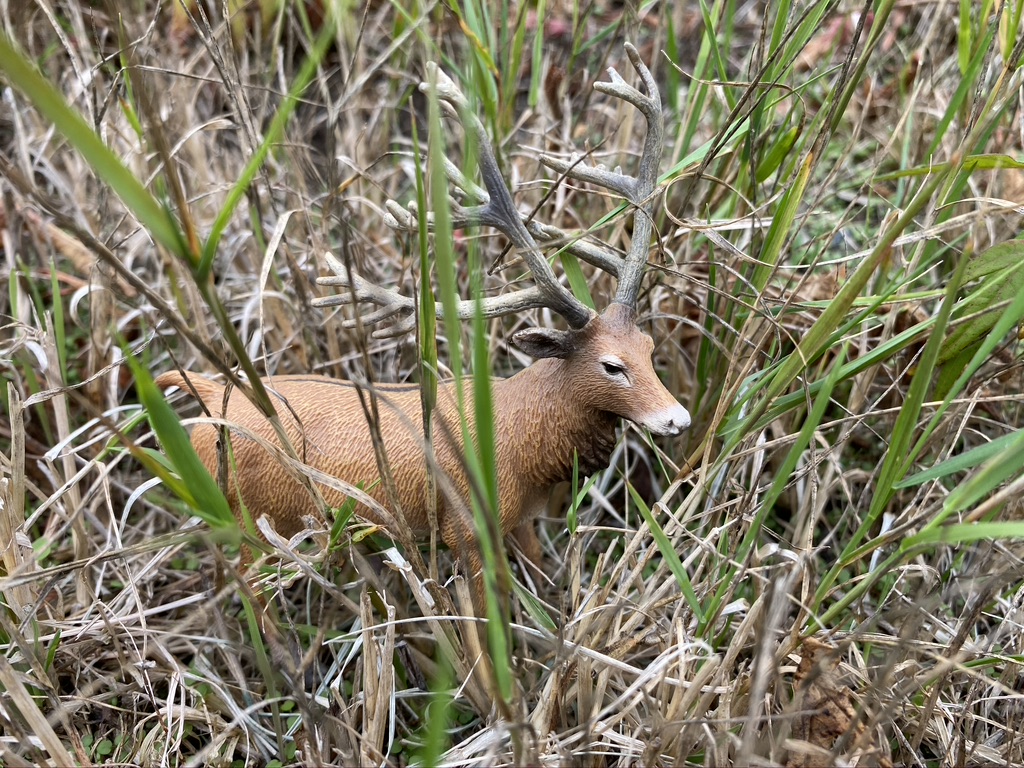
The overall body coloration is a reddish brown during the summer and turns to slightly darker grayish tone in the winter months. There is longer hair seen on the coat in particular around the neck/chest area, the back and shoulders. These longer hairs turn even woolier during the winter months to help keep the animal ward. The figure is sporting the reddish-brown summer coat and there is a lighter brown color on the underside. The figure also shows some of the longer hair especially those on the neck/chest area and back.

The head is beautifully sculpted and shows all the details such as nostrils and hair on the muzzle in a delicate but crisp way despite their small size. The eyes are big and painted black with white outline around them. The ears are big and held out in an alert position; you can see hair details all around it as well. You can see nice details on the base of the antlers as they break out of the skin, and there are tufts of longer hairs on the forehead.

Père David’s dear were heavily hunted during the late 19th century and were eventually extirpated from their native China. But early Europeans inadvertently saved it from total extinction by taking some specimen back to European zoos. They proved to be easy to breed and were adaptable to their new home of France and Germany.

Soon, a few animals were acquired by the 11th Duke of Bedford and were the founding herd for the population that would eventually be returned to their native homeland. In the 1980’s, some of these offspring were donated back to China as part of the reintroduction efforts to establish them in their native homeland.
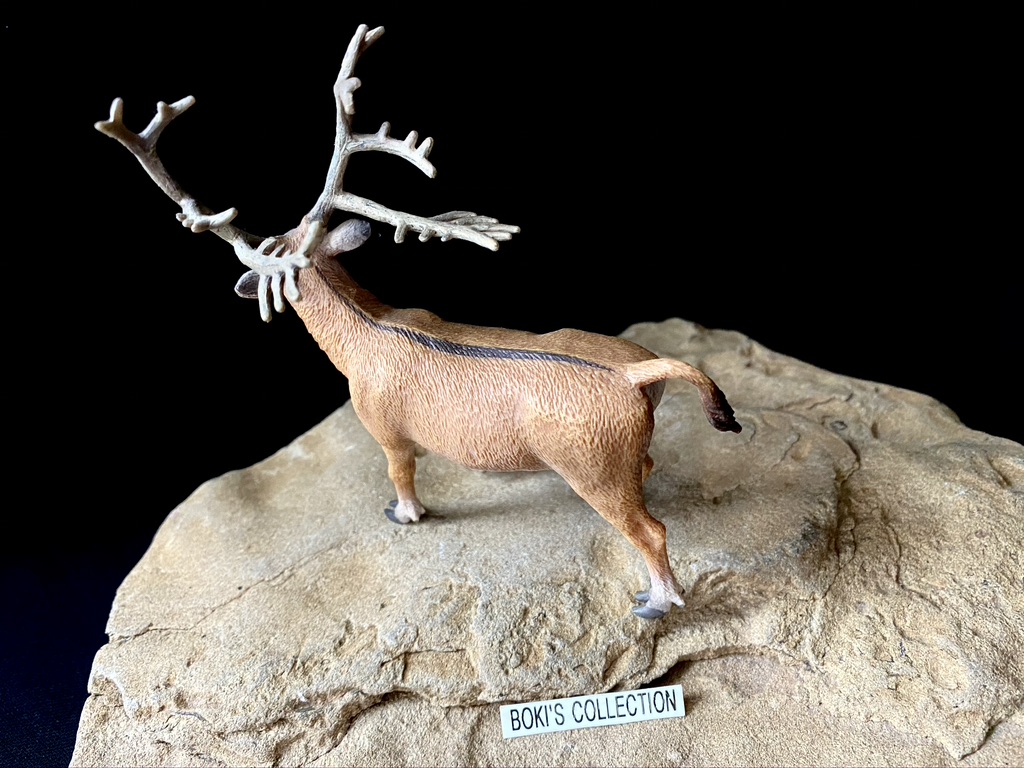
The reestablishment of herds proved successful that the population in China grew to around 700 or so animals found in semi-captivity. There are currently no true wild herds of this deer, all populations in China and around the world are kept in semi-wild environment or game parks and zoos.

Although extinct in the wild (the last true wild population were shot in the 1930’s), there is also a thriving industry of canned hunts; this is where animals in semi-enclosed holding area are “hunted” by trophy hunters who spend thousands of dollars.

In prehistoric times (Pleistocene period), in the not-so-distant past, the main predators of this species were tigers and leopards and other now long-extinct predators. Today, in their semi-captive existence, they no longer encounter these predatory big cats. Their main enemies are humans.
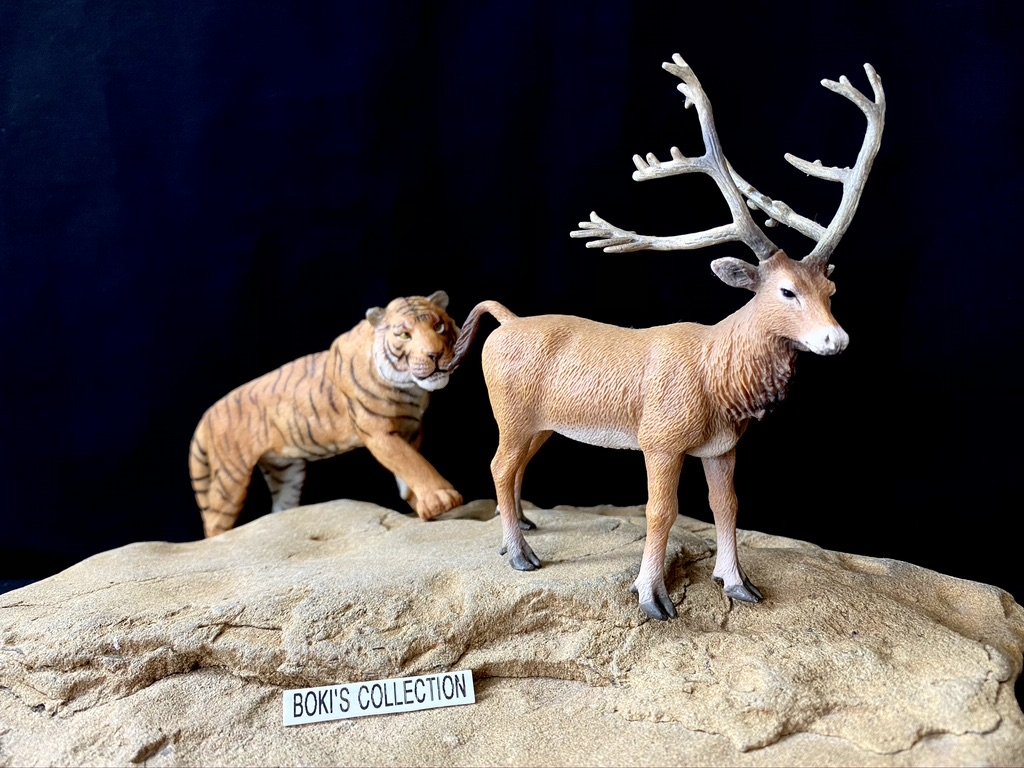
CollectA’s figure is truly a special one, not only is it the first toy figure of this animal, but it also serves as an educational figure, brining much wider attention to this rare, mysterious, and unique deer species. The figure is a true gem in any extant animal collection, especially those that are focused on Asian fauna, and won’t find itself out of place in a more prehistoric-focused collection as well.
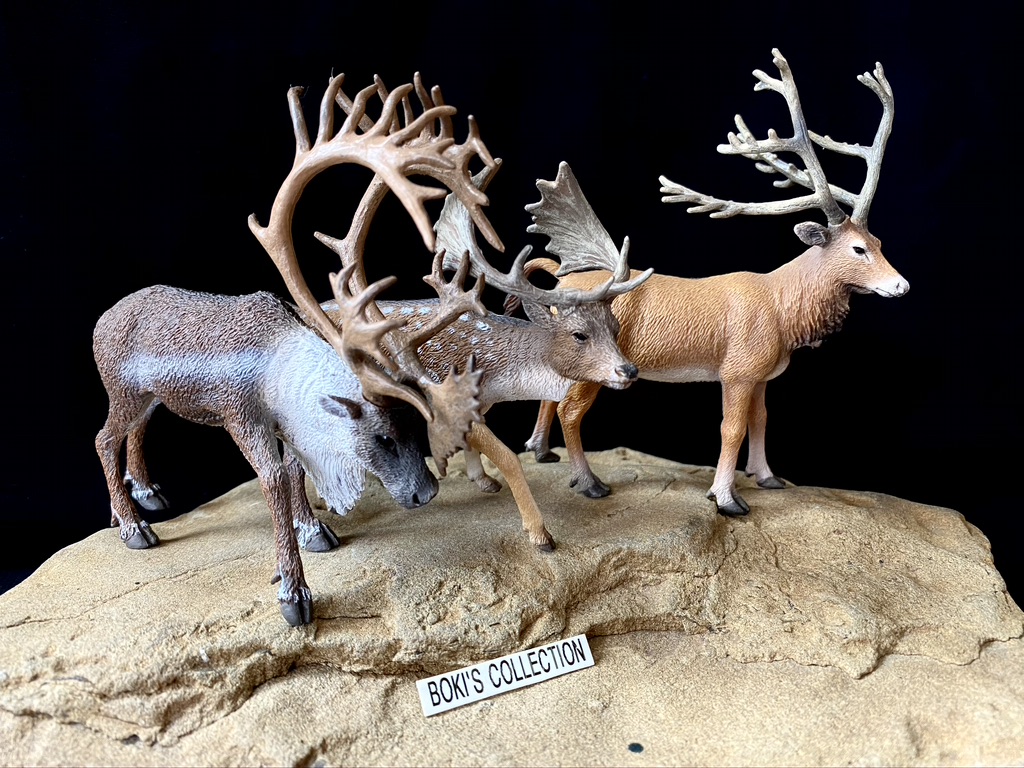
I hope that CollectA will continue to give us obscure animals,; they deserve the same attention as their more well-known relatives and are equally fascinating, if not more. The best way to encourage CollectA or any brand to keep on producing obscure animals is to support their products, and this figure should be on top of anyone’s list.
It is to be hoped that one day the Père David’s deer will find itself roaming the wilds of its native China as a true wild animal again. It would be a shame to never be able to see this magnificent deer in the wild.

Well, there you go, our review of this beautiful figure from CollectA. I hope that you all enjoyed it. Until the next review, stay safe and healthy. Cheers!
Disclaimer: links to Ebay and Amazon on the AnimalToyBlog are affiliate links, so we make a small commission if you use them. Thanks for supporting us!




Wonderful! Ikimon is producing this deer species later this year (early 2021?) as part of one of the regional Nature Techni Colour collections. However, it will be small, gashapon-sized (the set will also feature a golden takin, I believe). However, Ikimon is known for dragging things out, so we’ll see if/when it comes out…
Interesting review. I just noticed the antlers of this animal seem to have been the inspiration for the design of the antlers of Chinese dragons
Great job!